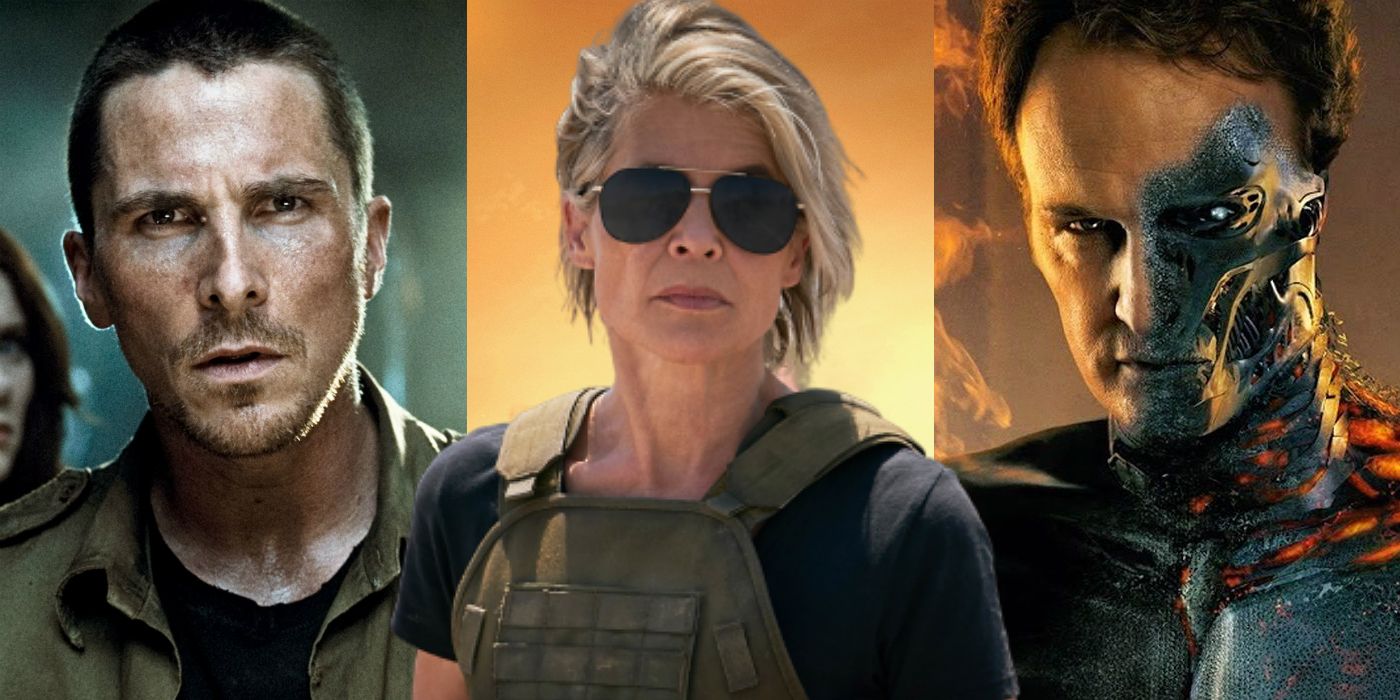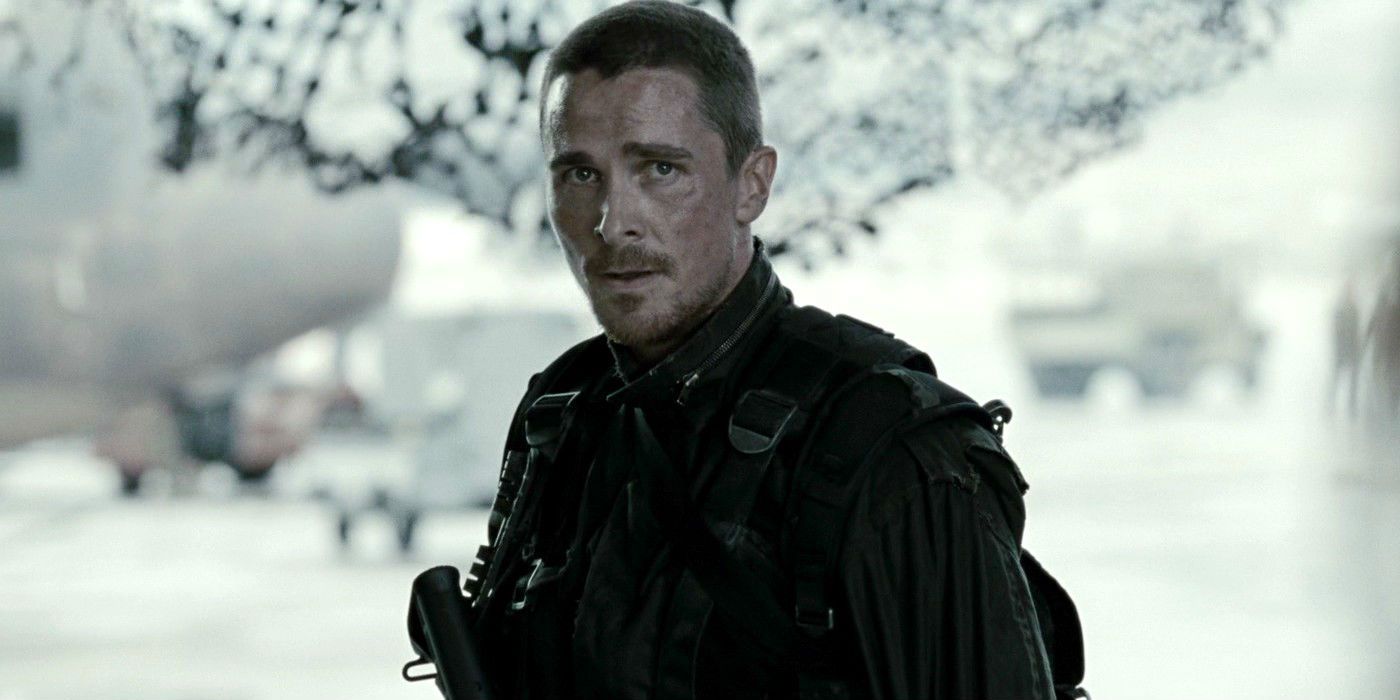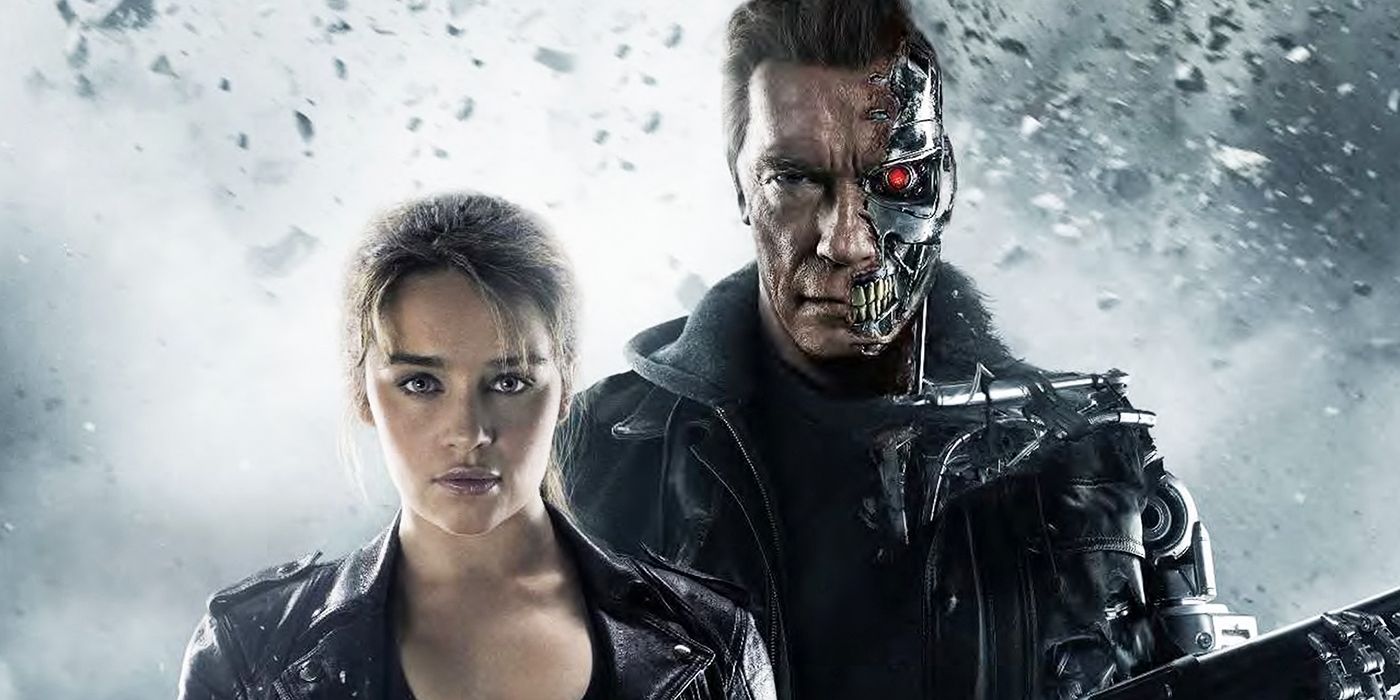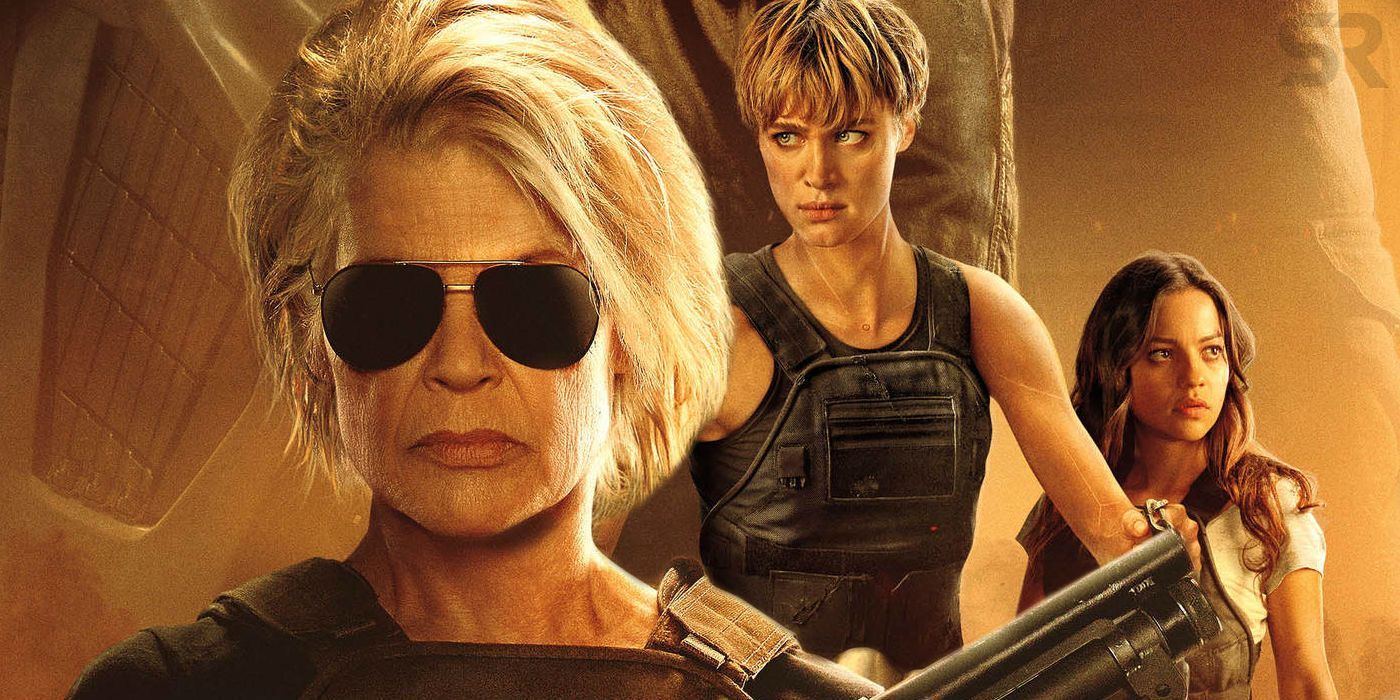The Terminator franchise has become one of the most rebooted in cinema history – here’s how the various revisions of the increasingly convoluted timeline break down. James Cameron’s The Terminator became a sleeper hit in 1984, with a story that blended classic sci-fi and horror tropes to great effect. The premise was a simple one: in the future, an artificial intelligence known as Skynet becomes self-aware and, in an attempt to become all-powerful, launches a global nuclear war designed to destroy the human race.
The 1991 follow-up Terminator 2: Judgment Day followed a similar narrative involving Skynet-controlled machines being sent back in time to dispose of the future leader of the human resistance: John Connor. In the sequel, John and his mother Sarah manage to destroy Cyberdyne Systems – the lab that would eventually create Skynet – thereby averting the first day of nuclear strikes, known as ‘Judgment Day’. Then, in 2003, some 12 years after T2, Warner Bros. green-lit a third Terminator film, this time sans James Cameron. Terminator 3: Rise Of The Machines’ plot picked things up ten years after the events of its predecessor, and saw John Connor battling a new form of Terminator, the T-X. This time, things ended with Connor witnessing a new judgment day unfolding in front of his eyes.
With three Terminator films in the books, the franchise would see some major shifts, starting with 2009’s Terminator Salvation. After this fourth entry, retconning the timeline became the norm, with every new instalment trying to insert itself awkwardly into the chronology while simultaneously doing away with some already-established aspect of it. The trend continued with 2015’s Terminator Genisys and 2020’s Terminator: Dark Fate. So many revisions have left little more than a mangled and disorienting chronology in their wake. With that in mind, here’s each of the Terminator reboots explained.
Terminator Salvation
2009’s Terminator Salvation switched things up for the franchise by giving audiences the first full film set in a post-judgment day world. Specifically, Salvation depicts the year 2018, where Christian Bale’s John Connor is leading the fight against Skynet and its army of killer cyborgs. Director McG actually kept things fairly straightforward in terms of chronology here, essentially following the timeline established by the previous three movies – even including a Linda Hamilton audio cameo. As such, Terminator Salvation doesn’t quite deserve even the 'soft reboot' label, but functions in much the same way – switching things up by introducing a new cast and setting.
At this point, the timeline remained pretty much in-tact, with a straightforward narrative running from The Terminator, right through to McG’s fourth instalment. That said, Salvation occupies a somewhat uncertain position in Terminator history – is it a sequel to Terminator 3, or a prequel to The Terminator? Of course, it could easily be both, but there were enough Terminator plot-holes in Salvation to start a collective raising of eyebrows as fans started to wonder just how necessary the new movies were. Unfortunately, things wouldn’t get much better as they went on.
Terminator Genisys
With the arrival of Terminator Genisys in 2015, things started to get infinitely more perplexing. This time around, audiences were treated to the first major retcon of the series, with Genisys introducing an entirely separate timeline. The new sequence of events kicks off right where The Terminator began. Once again, John Connor sends a member of the resistance, Kyle Reese, back to 1984 to protect Sarah Connor (Emilia Clarke) from one of Skynet’s machine minions. This time, however, Reese arrives to discover a significantly more badass Sarah awaiting him. In this timeline, a Terminator was sent through time to kill Sarah as a child, but was thwarted by a reprogrammed Terminator, affectionately referred to as “Pops”, who in 1984 acts as her personal bodyguard.
After this initial break in timelines, things descend into an almost incomprehensible series of plot developments, with Kyle, Sarah, and "Pops" all time-travelling to 2017, where a new form of Judgment Day is set to occur. With the original 1997 Judgment Day being delayed, 2017 is revealed to be the year a new operating system named Genisys goes online, consequently becoming self-aware and giving rise to Skynet. There’s also an evil, machine-infused John Connor involved.
It's all quite bewildering but the main thing to remember with Terminator Genisys is that it pretty much exists in a stand-alone timeline. While it shares a beginning with The Terminator, with Kyle Reese being sent back through time, that’s about it in terms of shared narrative with other the other instalments. Once Reese arrives in 1984, the story immediately diverges from the previous films, setting Genisys in its own self-contained timeline. And considering the film's disappointing critical and commercial performance, and the behind-the-scenes turmoil that was said to have plagued Terminator Genisys' production, it’s undoubtedly a good thing that this misstep remains consigned to its own bewildering universe.
Terminator: Dark Fate
As a direct sequel to Terminator 2: Judgment Day, Terminator: Dark Fate did away with the previous three films in the franchise. Put simply, Dark Fate effectively terminates the continuity established in every film that followed Terminator 2 – even going so far as to retcon elements of Cameron's original Terminator films. With this instalment, the story jumps from the destruction of Miles Dyson’s lab and the resulting “death” of Skynet back in T2’s 1995, to the year 2020 when a new future-AI threat makes itself known.
Following Terminator 2, John Connor is quickly dispatched by a T-800 model Terminator while hiding out in South America. This opening proved to be controversial as it essentially rendered much of the 1991 movie’s plot meaningless, with even original John Connor actor Edward Furlong expressing his distaste at the development. After witnessing her son’s murder, Sarah Connor, played once again by a returning Linda Hamilton, spends the next few years as a Terminator hunter, taking out any machine that dares to travel back in time. Eventually, she encounters Dani Ramos (Natalia Reyes), who in this timeline is set to become the new future-leader of the resistance. But with Skynet’s existence being wiped out in T2, the big bad AI of the future is now known as Legion, which sends a new liquid metal ‘Rev-9’ model Terminator back to the year 2020 to kill Dani and ensure its own existence comes to fruition.
The film also introduces an enhanced human protector of the future, played by Mackenzie Davis, alongside the return of Arnold Schwarzenegger as a fully-fledged family-man Terminator. Sound confusing? It is – but slightly less confusing than the Terminator continuity had become up until this point. Unfortunately, despite garnering its share of positive reviews, the film failed to win over audiences and with a meager $261.1 million worldwide box office take, it seems likely that the timeline established by the latest Terminator movie also ends with that same film. Initially envisioned as a launching pad for a new Terminator trilogy, Dark Fate's title turned out to be a somewhat self-fulfilling prophecy for a franchise running on fumes.
Where Terminator's Story Goes Next
With the return of Linda Hamilton and original director James Cameron on-board as producer, there were high hopes for Dark Fate. Unfortunately, on top of the film's poor box office performance, director Tim Miller opted to fill his effort with rehashed action sequences and plot points from the first two movies. All of which almost certainly guarantees the planned sequels won’t materialise, and with yet another failure in Dark Fate, the Terminator franchise is looking like it might never recapture audiences’s attention like it once did. And with no official news on the series' future, things aren't looking good.
But it would be short-sighted to count out such a beloved sci-fi franchise entirely. James Cameron’s original two films remain iconic examples of the genre, and if Hollywood has shown anything in recent decades, it's that a remotely successful franchise will be rebooted to within an inch of its life. The question is whether Terminator: Dark Fate is the film at which that the franchise has reached that point.
Bringing back Cameron and Hamilton, alongside Schwarzenegger, didn’t prove enough to entice audiences, but perhaps the Terminator reboots didn’t fail due to casting issues, but because they failed to grapple with the theme of humanity’s self-engineered doom as successfully as the first films in the franchise. Thus far, the recent Terminator sequels' nods to the past feel less like faithful continuations of the original films' vision and more like cynical attempts to leverage fan nostalgia. Perhaps the Terminator franchise hasn't suffered because it keeps rebooting, but because it keeps rebooting the wrong way.
While audiences may well have seen the last big screen Terminator outing after Dark Fate, artificial intelligence and impending world collapse have become increasingly relevant topics of late. Surely there's room for a well-thought-out update to this well-worn series – even if it takes a super-intelligence to bring it to fruition





